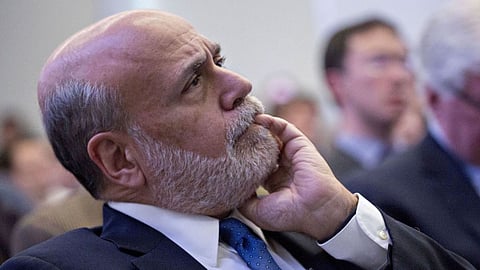Ben S. Bernanke, former chairman of the U.S. Federal Reserve, listens during a Hutchins Center on Fiscal and Monetary Policy event at the Brookings Institution in Washington, D.C., U.S., on Monday, Jan. 8, 2018. The event was entitled Should the Fed Stick with the 2 Percent Inflation Target or Rethink It. Photographer: Andrew Harrer/Bloomberg
Locked
Most Nobel laureates develop theories; Ben Bernanke put his into practice – with insight from The Wall Street Journal
Former Fed chairman Ben Bernanke and two other academics developed the theoretical foundations for why banks exist and why bank panics hurt.

